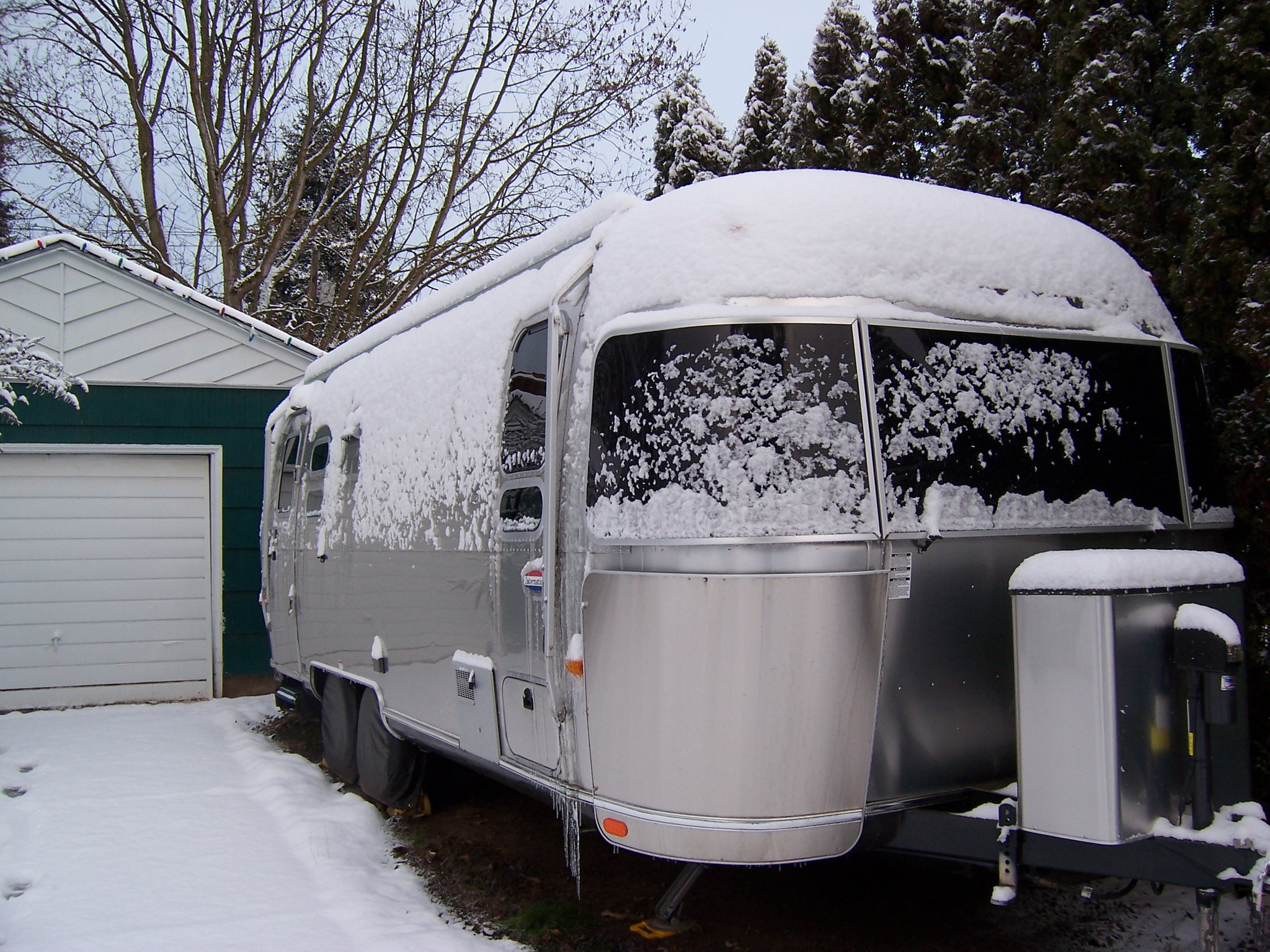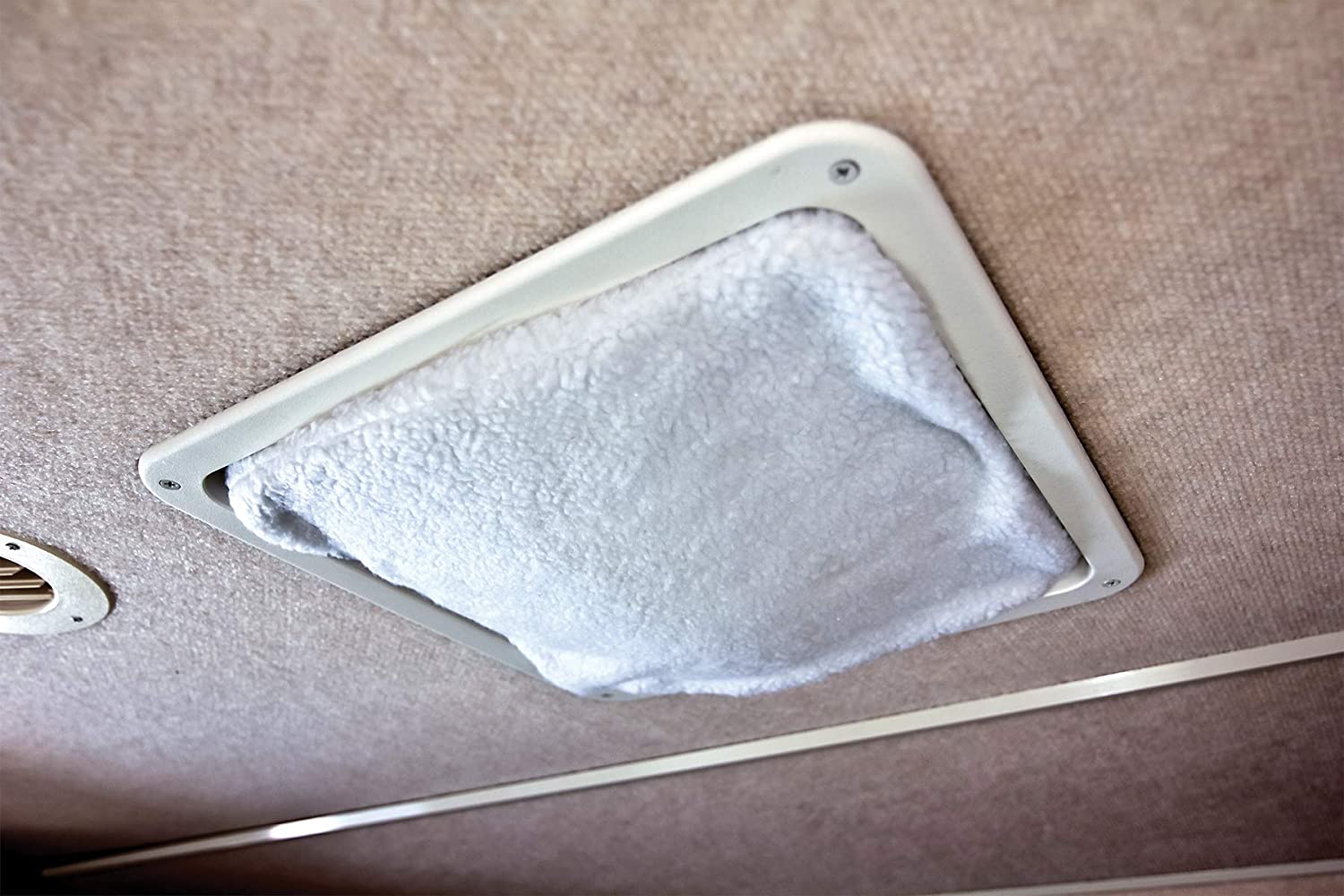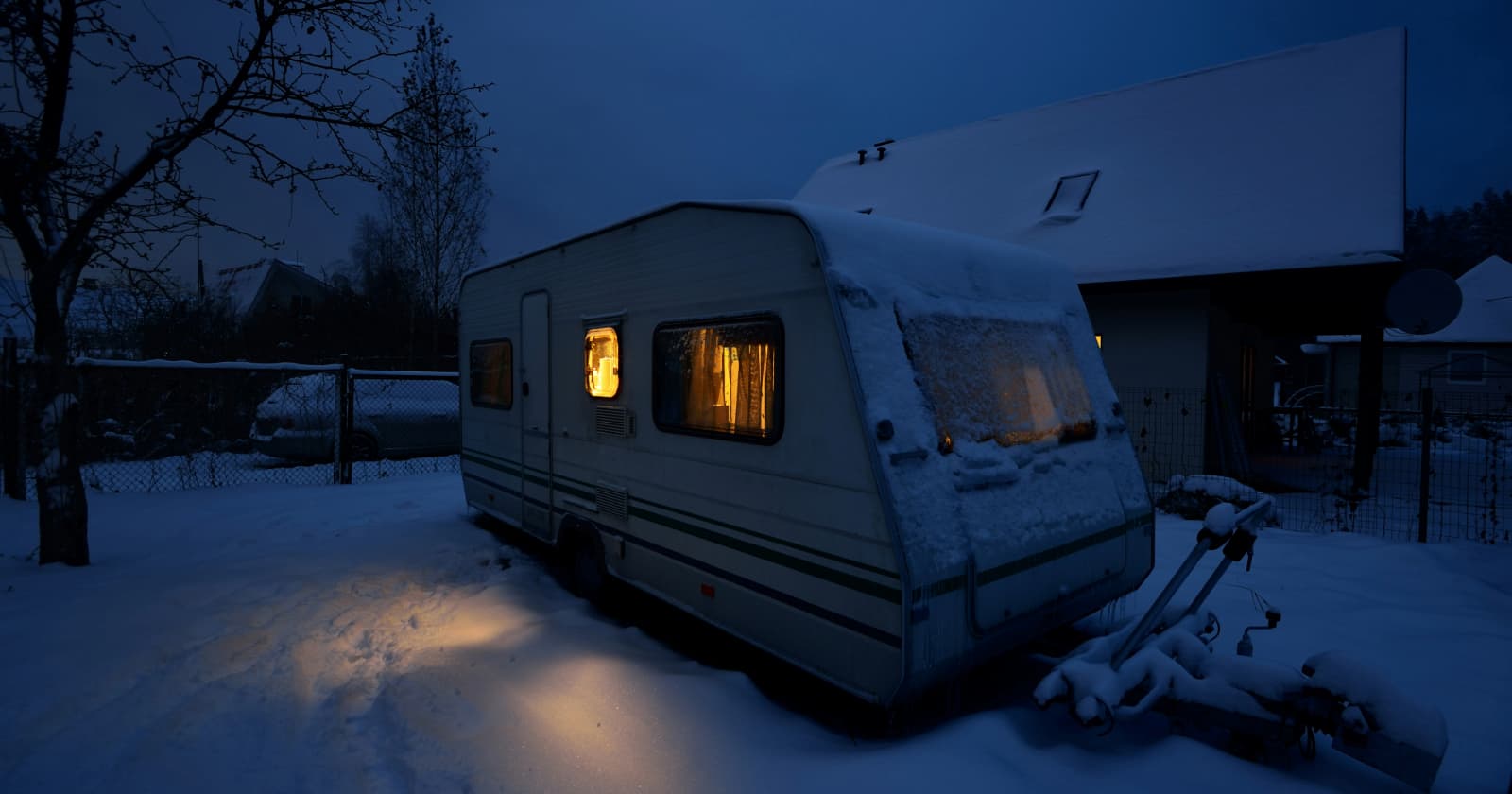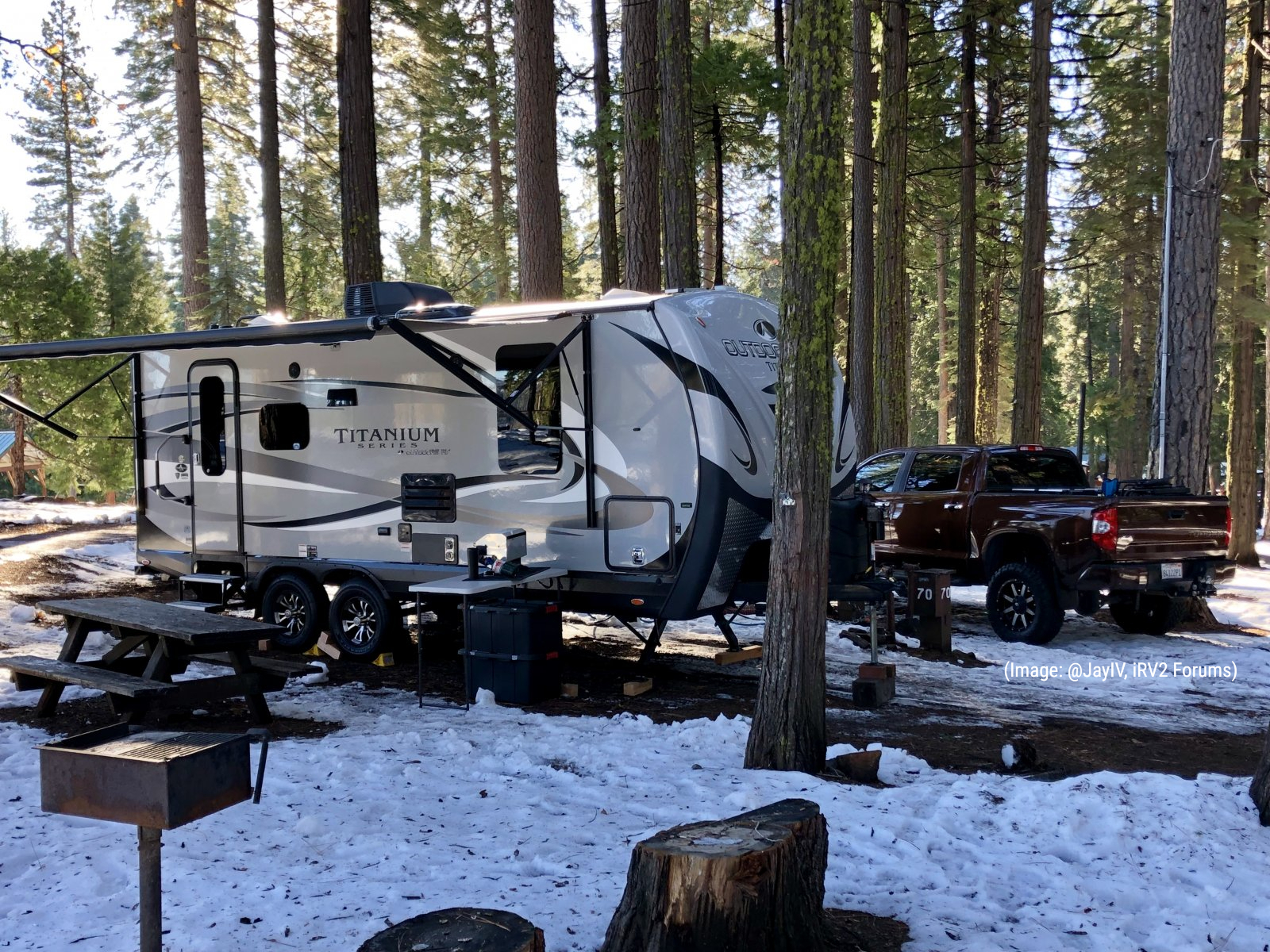
5 Misconceptions About Winter Camping
Many assume winter RV camping isn’t an option for them or their RV. Following the routine of others, they just winterize the RV and put it in storage mode until spring. However, it doesn’t have to be that way, as most any rig can still be used for winter RV camping.
RV camping over the winter is not only possible, but can be enjoyable even in the freezing cold weather. Here are 5 common misconceptions about RV winter camping.
1. I won’t be able to keep my RV warm enough to be comfortable
Those new to winter RV camping should consider seeking out a campsite with electricity for their first outing. Having electricity provides an extra energy source to fall back on until you learn how to manage your house batteries and propane usage.
Having electricity available allows you to freely use auxiliary heat sources like electric space heaters, tank heaters, electric blankets, etc. While the factory-installed forced air furnace(s) should always be the primary heat source, as the heat ducts are routed to keep the plumbing from freezing, auxiliary heat sources may be needed to stay comfortable and/or used to save precious resources like propane and house batteries.
Popular auxiliary heat sources for RV winter camping include the following:
- Catalytic heaters are used by many RVers as they generate heat via propane, through a flameless catalytic chemical reaction, without the need for electrical power. They are deemed relatively safe for interior RV use as they don’t have the hazard of an open flame and they do not produce carbon monoxide which is deadly. The downside is they do consume oxygen and produce water vapor, which will condensate on windows and other cold surfaces. Always follow the manufacturer’s instructions regarding adequate ventilation.
- Electric space heaters are a great source of auxiliary heating when camping in a site with electricity. They can be used to keep sleeping areas warm at night without requiring the gas RV furnace to be operated at higher temperatures. For safety, select a ceramic type electric heater with a thermostat and tip-over protection or an oil-filled radiator type heater.
- Propane space heaters are another option when you don’t have electricity available. Be sure and select one rated for indoor use with an oxygen sensor that will turn the unit off if oxygen levels drop too low. Always follow the safety instructions as there is a risk of fire with these types of units. Like catalytic heaters, considerable water vapor is released during operation that will have to be dealt with in the form of condensation.
Now that you know how to generate auxiliary heat while winter RV camping, you will also want to employ some methods to keep that heat from escaping.
- Windows are a big source of heat loss in RVs, so if you aren’t fortunate enough to have dual pane windows in your RV, you will need to find a way to slow down heat transfer. Possible solutions include storm windows, insulated curtains, bubble wrap, insulation board, or heat shrink film.
- Floors will be cold to those that like to walk around barefoot or in stocking feet. Add extra insulation and comfort with area rugs or carpet runners.
- Roof vents are just a thin shell of plastic separating the indoors of your RV from the bitter cold on the other side. Consider using RV vent cushions or insulated covers to slow heat transfer.
Finally, consider carrying an extra cylinder or two of propane so you won’t run short, necessitating an early ending to your winter RV camping trip.

2. The RV plumbing system will freeze
As mentioned above, don’t forgo the use of the RV’s built-in furnace as a heat source as it circulates heat to keep your RV’s plumbing system from freezing. Here are some other steps you can take to keep your fresh water system from freezing while winter RV camping.
- Employ the use of heat tape where fresh water lines are exposed or poorly insulated.
- Use a small electric heater or drop light with an incandescent bulb in bays or other areas that contain plumbing components but aren’t well heated. Some may want to install a smoke detector in interior bays for added safety.
- Open bathroom and kitchen cabinets to allow warm air to circulate under counter pipes and fixtures.
- Many RVers leave their faucets dripping at night when hooked to city water to avoid freezing up water lines as moving water doesn’t easily freeze. Just keep in mind that water has to go somewhere and if your drain line or gray tank freezes up the resulting “back up” could be messy!
- Owners of towable RVs (travel trailers, fifth wheels, truck campers, etc) will want to leave the furnace set at a low temperature while in transit during sub-freezing temperatures. If you are uncomfortable traveling with your LP turned on during transit, stop periodically and fire up the furnace.
- If your fresh water tank is not enclosed in a heated portion of the RV, consider a tank heater or leave it empty and use city water and a heated water hose. If your fresh water tank is enclosed, many RVers choose to draw fresh water from their water tank rather than dealing with keeping a city water connection, if available, and hose from freezing. Note: Always drain and/or return your fresh water hose to a heated space after filling your fresh water tank in freezing weather.
3. The RV holding tanks will become blocks of ice
Those that go winter RV camping have several options to keep their holding tanks from freezing.
- If your holding tanks are enclosed in a heated area of the underbelly, keeping them from freezing is just a matter of running the RV’s forced-air furnace.
- Install holding tank heaters to keep your holding tanks from freezing.
- Pour RV antifreeze down the toilet to protect the black tank and drains that lead to the gray tank protecting the gray tank. Some RVers recommend using rock salt to protect the holding tanks, but it can be corrosive to the dump valves and other components and isn’t the best choice.
- Keep the dump valves closed and dump the tanks when they are approximately ¾ full. Never let water stand in the sewer hose as it will freeze.
4. I don’t want to de-winterize and re-winterize my rig after each winter RV camping trip
Many RVers plan multiple winter RV camping trips through the cold season and don’t want the hassle of de-winterizing their rig to go out for a weekend only to re-winterize it a couple of days later.
The easiest thing to do in this scenario or, when it is extremely cold, is to leave the fresh water system winterized and use jugs of water to flush the toilet, brush your teeth, cooking, etc. Water can be heated on the stove at bath time.
5. It’s not safe!
There are some extra safety precautions that should be taken when winter RV camping, but don’t let this keep you from enjoying your RV during this special time of year.
- Make sure to clear snow that could block exhaust vents from the furnace and refrigerator.
- Check the batteries before each trip in your carbon monoxide detector and smoke detector(s) as cold weather can quickly zap battery strength.
- Stay hydrated and watch for signs of hypothermia.
- Carry tire chains in states that require them and know how to use them. Drag chains may also be required for travel trailers and fifth wheels.
- Know that the chemical solution inside the cooling unit of your RV’s absorption refrigerator can start turning into a gel below 20° F potentially impacting operation and in turn causing damage to the cooling unit. To keep your refrigerator operating trouble-free, block the upper 2/3 of the lower vent to retain heat or use an incandescent drop light (25-40 watt bulb) or another small heat source to keep the area above 20° F.
- Assure a supply of fresh air. Don’t seal up your RV so tight there is no ventilation or air exchange.
Youtubers RV Lifestyle shared this short video with additional guidance on how to make winter RV camping more comfortable:
Give winter RV camping a try this year, you might find it is your favorite time of the year. Oh, and an added benefit of winter camping is no bugs!
For more winter RV camping tips, check out these great resources:



